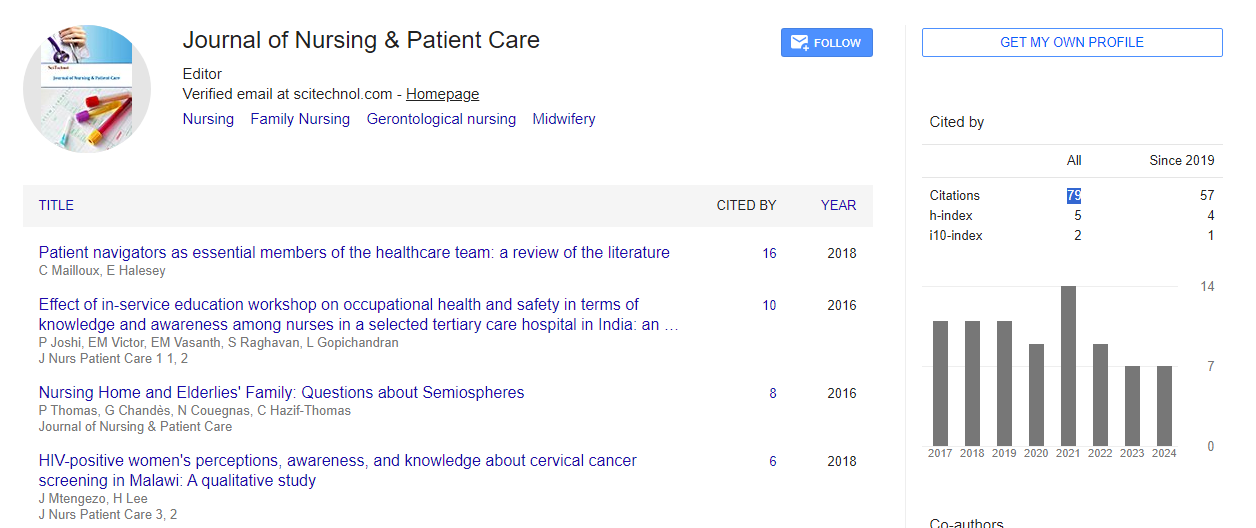Nursing education and nursing practice in respiratory care in Japan
Tomoko Hasegawa
University of Fukui, Japan
: J Nurs Patient Care
Abstract
Our society is getting extremely older, about 30% of the Japanese population is more than 65 years old. The aging of the population as a whole means that the number of people with some diseases is also increasing. For the view point of respiratory care professionals, we have increased number of respiratory diseases. Smoking rate in 1980th was about 80% in Japan. Those people who were smokers in 1980th likely to become COPD and other respiratory disese in now. The number of doagnpsed COPD patients is about 220,000, but the number of undiagnosed COPD is estimated about 5 million (NICE study, 2001). The other challenge is the number of respiratory physicians. There are not enough number of respiratory doctors. We need some countermeasures. The Japan Nursing Association (JNA, 1994) has developed a system to certify nurses who can use advanced nursing skills and knowledge to provide a high level of nursing practice, leadership, and consultation in a specific nursing area. As a result of the increasing number of patients with chronic respiratory diseases, the Chronic Respiratory Nursing CN (CR-CN) was established in 2010
Biography
After obtaining her nursing license, Tomoko Hasegawa worked as a nurse at the Shizuoka Red Cross Hospital, Japan. She then studied in California, USA, where she obtained her registered nurse and public health nurse licenses and worked as a nurse. She also received a bachelor's degree in nursing and a master's degree in health sciences from the Loma Linda University, California. After returning to Japan, she worked as a faculty member at the University of Fukui. Professor Hasegawa received her doctorate in nursing from the Osaka University. She has been working as a professor of nursing at the University of Fukui since 2007.
 Spanish
Spanish  Chinese
Chinese  Russian
Russian  German
German  French
French  Japanese
Japanese  Portuguese
Portuguese  Hindi
Hindi 